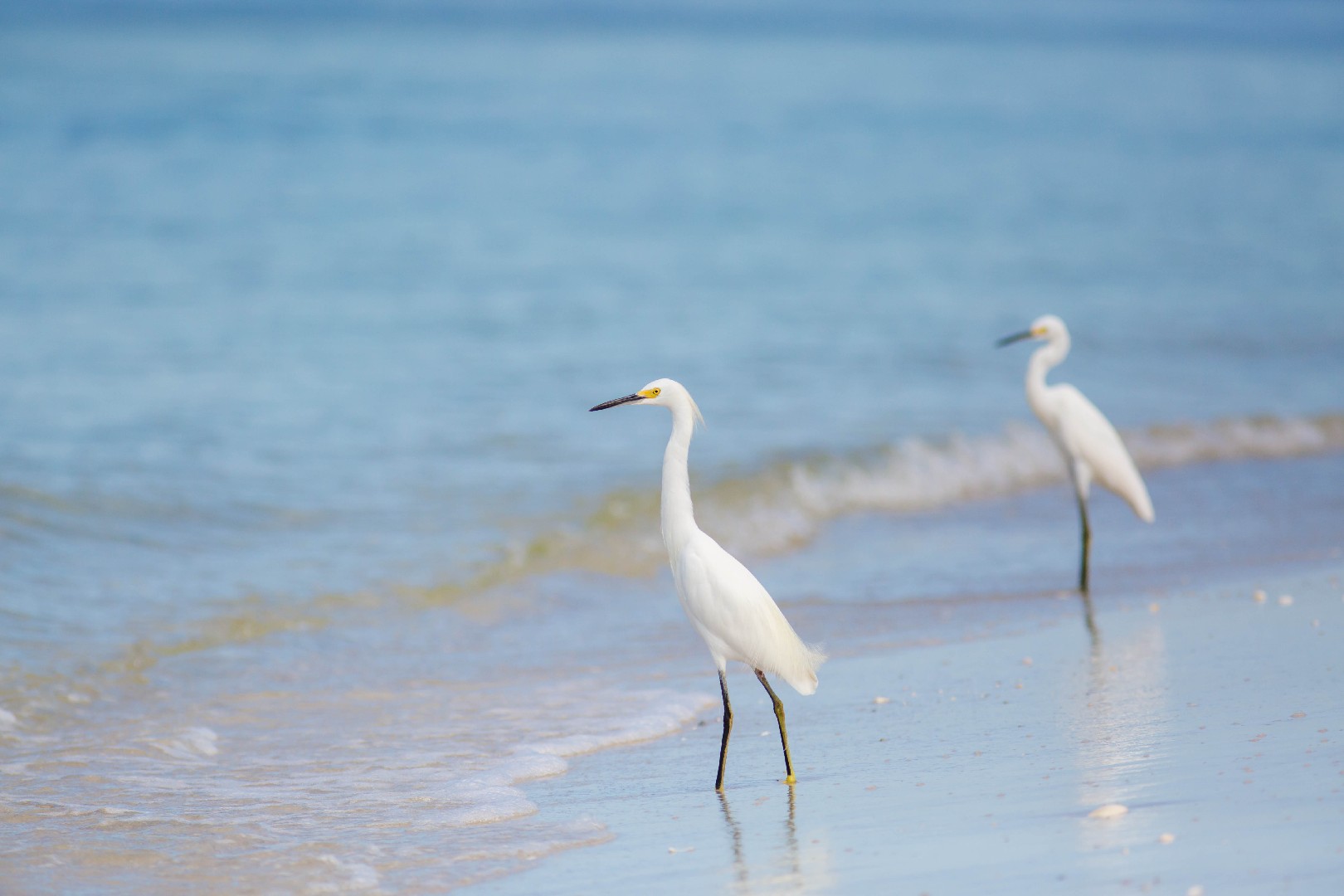Snowy Egret
A species of Typical Egrets, Also known as Snowy Scientific name : Egretta thula Genus : Typical Egrets
Snowy Egret, A species of Typical Egrets
Also known as:
Snowy
Botanical name: Egretta thula
Genus: Typical Egrets
Content
Description People often ask General Info
Description
The snowy Egret is a mid-sized, totally white egret that prefers nesting in urban areas rather than in isolated locations where there are more predators. In the late 1800s, the bird's beautiful plumes were in great demand as decoration for women's hats. Because of this snowy Egrets were hunted to near extinction before laws came into effect to protect them.
Size
56 - 66 cm
Life Expectancy
18-22 years
Nest Placement
Tree
Clutch Size
2 - 6 eggs
Number of Broods
24 - 25 days
Nestling Period
20 - 24 days
Feeding Habits
Snowy Egret primarily consume aquatic prey like fish, frogs, worms, crustaceans, and insects. They exhibit dynamic foraging behaviors, including paddling with yellow feet, bill vibrating, and wing flicking. Habitats range from saltmarshes to freshwater marshes, favoring shallow brackish or marine environments. They forage alone or in mixed-species groups, employing strategies of active hunting or still ambush.
Habitat
Snowy Egret predominantly inhabit wetlands, thriving in both saltwater and freshwater environments. They seek shallow waters with ample vegetation, often nesting in secluded, plant-dense areas such as barrier islands and salt marshes. Habitats range from tropical South American waters to North American temperate regions, extending to various elevations. Key vegetation they reside in includes mangroves, marshes, swamps, and estuaries, with winter migrations to lagoons and grassy ponds.
Nest Behavior
Males of snowy Egret initially stake out territories and begin nest construction before mating. Females predominantly build the nests with materials provided by males. Nest building, egg-laying, and parental care patterns are species-specific behaviors that reflect snowy Egret's adaptation to its habitat.
Nest Characteristics
Snowy Egret's nest is typically located in the dense vegetation of breeding colonies, often in upper or outer branches of trees, shrubs, or vines. The construction is a shallow oval made of twigs, small sticks, grass, sedges, rushes, and Spanish moss, measuring 14-18 inches across and 8-13 inches high.
Dite type
Piscivorous
People often ask
General Info
Feeding Habits
Bird food type
Sounds
Call
Recording location: Brazil
Call
Recording location: United States
Behavior
Snowy Egret's typical day involves actively foraging in shallow water, often running or shuffling their feet, occasionally using their wings to shade and see fish better. They are highly social, coexisting with various waterbirds and displaying complex courtship rituals, including animated displays and vocalizations to attract mates. In nesting colonies, snowy Egret fiercely defends its territory with showy postures and calls. While vigilant of predators like alligators or raccoons, they also exhibit unique cooperative behavior during hunts with other species.
Distribution Area
The snowy egret is native to North, Central and South America. It is present all year round in South America, ranging as far south as Chile and Argentina. It also occurs throughout the year in the West Indies, Florida and coastal regions of North and Central America. Elsewhere, in the southern part of the United States, it is migratory, breeding in California, Nevada, Utah, Colorado, Arizona, New Mexico, Texas, Louisiana and Mississippi. 
Scientific Classification
Phylum
Chordates Class
Birds Order
Pelicans and Relatives Family
Herons Genus
Typical Egrets Species
Snowy Egret 